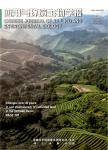Comparison of soil fertility of Acer insigne, Quercus castaneifolia, and Pinus brutia stands in the Hyrcanian forests of Iran
Comparison of soil fertility of Acer insigne, Quercus castaneifolia, and Pinus brutia stands in the Hyrcanian forests of Iran作者机构:Department of Forestry Faculty of Natural Resources Tarbiat Modares University
出 版 物:《应用与环境生物学报》 (Chinese Journal of Applied and Environmental Biology)
年 卷 期:2014年第20卷第5期
页 面:899-905页
核心收录:
学科分类:09[农学] 0903[农学-农业资源与环境] 090301[农学-土壤学]
主 题:plantation needle-leaved species broad-leaved depth
摘 要:Trees species have different effects on soil properties and nutrients. Plantation as a management strategy for soil productivity retention and the prevention of destruction can be effective in the continuity of forest productivity. After 21 years, the effects of the maple(Acer velutinum Bioss.), oak(Quercus castaneifolia C. A. Mey.), and red pine(Pinus brutia Ten.) stands on soil fertility were assessed in the Sari region(northern Iran). Soil was sampled at depths of 0-10, 10-20, 20-30, and 30-40 cm at all stands using a core soil sampler with an 81 cm2 cross section. Soil texture, pH, organic carbon(C), total nitrogen(N), available phosphorus(P), potassium(K), calcium(Ca), and magnesium(Mg) for all samples were measured in the laboratory. Our findings showed that the planted stands significantly affected soil physicochemical properties. Statistical comparisons revealed that the highest and lowest levels of N, P, K, Ca, and Mg in soil occurred in the maple and red pine stands, respectively. Measurements of soil fertility showed that fertility decreased in relation to increased soil depth, with significant differences depending on soil depth. Our results suggest that to rehabilitate degraded natural forests, at least in northern Iran, the plantation of suitable native broad-leaved species can be recommended for forestation plan management.



